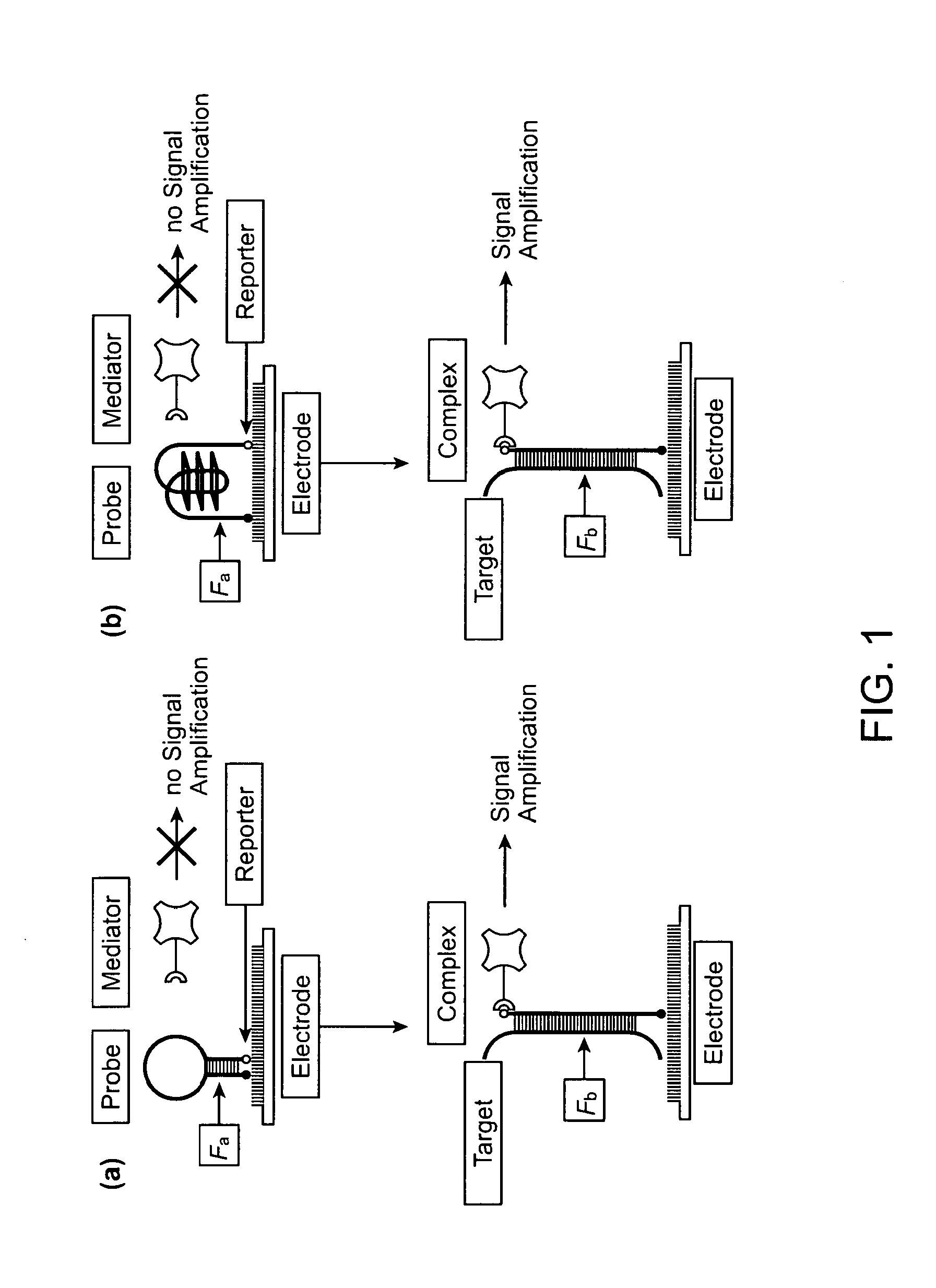High specificity and high sensitivity detection based on steric hindrance & enzyme-related signal amplification
a steric hindrance and enzyme-related signal technology, applied in the field of nucleic acid probes and assay methods, can solve the problems of introducing more false-positive results into the detection system, methods that require a compromise between specificity and sensitivity, and higher background level and false-positive results, so as to reduce or eliminate false-positive results, the effect of increasing specificity
- Summary
- Abstract
- Description
- Claims
- Application Information
AI Technical Summary
Benefits of technology
Problems solved by technology
Method used
Image
Examples
example 1
Monitoring Low Concentration of mRNA using the Hairpin Probe Design
[0063]mRNA biomarkers in saliva show that saliva can act as a diagnostic fluid for the oral disease, and possibly for other systematic disease. However, concentration of specific mRNA biomarker in saliva is below femto mol / L. In addition, large excess of non-specific mRNA, rRNA and protein coexist. The key point is how to detect tiny amounts of mRNA or protein in saliva without purification and amplification.
[0064]Disclosed herein includes an electrochemical array to IL8, an mRNA biomarker for oral cancer. Use of a probe according to the present invention is exemplified. The probe is designed as hairpin structure. The reporter is the detection probe (fluorescein-green). The mediator is the anti-fluorescein-HRP conjugate. The signal amplification is based on HRP redox process. The signal read-out is current. Fa is the Gibbs free energy of hairpin probe. Fb is the Gibbs free energy of duplex formed between probe and ta...
example 2
Electrochemical Detection of Salivary mRNA Employing a Hairpin Probe (HP)
[0099]The probe was designed based on the principle that steric hindrance (SH) suppresses unspecific signal and generates a signal-on amplification process for target detection. The stem-loop configuration brings the reporter end of the probe into close proximity with the surface and makes it unavailable for binding with the mediator. Target binding opens the hairpin structure of the probe, and the mediator can then bind to the accessible reporter. Horseradish peroxidase (HRP) was utilized to generate electrochemical signal. This signal-on process is characterized by a low basal signal, a strong positive readout, and a large dynamic range. The SH is controlled via hairpin design and electrical field. By applying electric field control to hairpin probes, the limit of detection of RNA is about 0.4 fM, which is 10,000-fold more sensitive than conventional linear probes. Endogenous IL-8 mRNA is detected with the HP...
PUM
| Property | Measurement | Unit |
|---|---|---|
| Tm | aaaaa | aaaaa |
| Tm | aaaaa | aaaaa |
| Tm | aaaaa | aaaaa |
Abstract
Description
Claims
Application Information
 Login to View More
Login to View More - R&D
- Intellectual Property
- Life Sciences
- Materials
- Tech Scout
- Unparalleled Data Quality
- Higher Quality Content
- 60% Fewer Hallucinations
Browse by: Latest US Patents, China's latest patents, Technical Efficacy Thesaurus, Application Domain, Technology Topic, Popular Technical Reports.
© 2025 PatSnap. All rights reserved.Legal|Privacy policy|Modern Slavery Act Transparency Statement|Sitemap|About US| Contact US: help@patsnap.com



